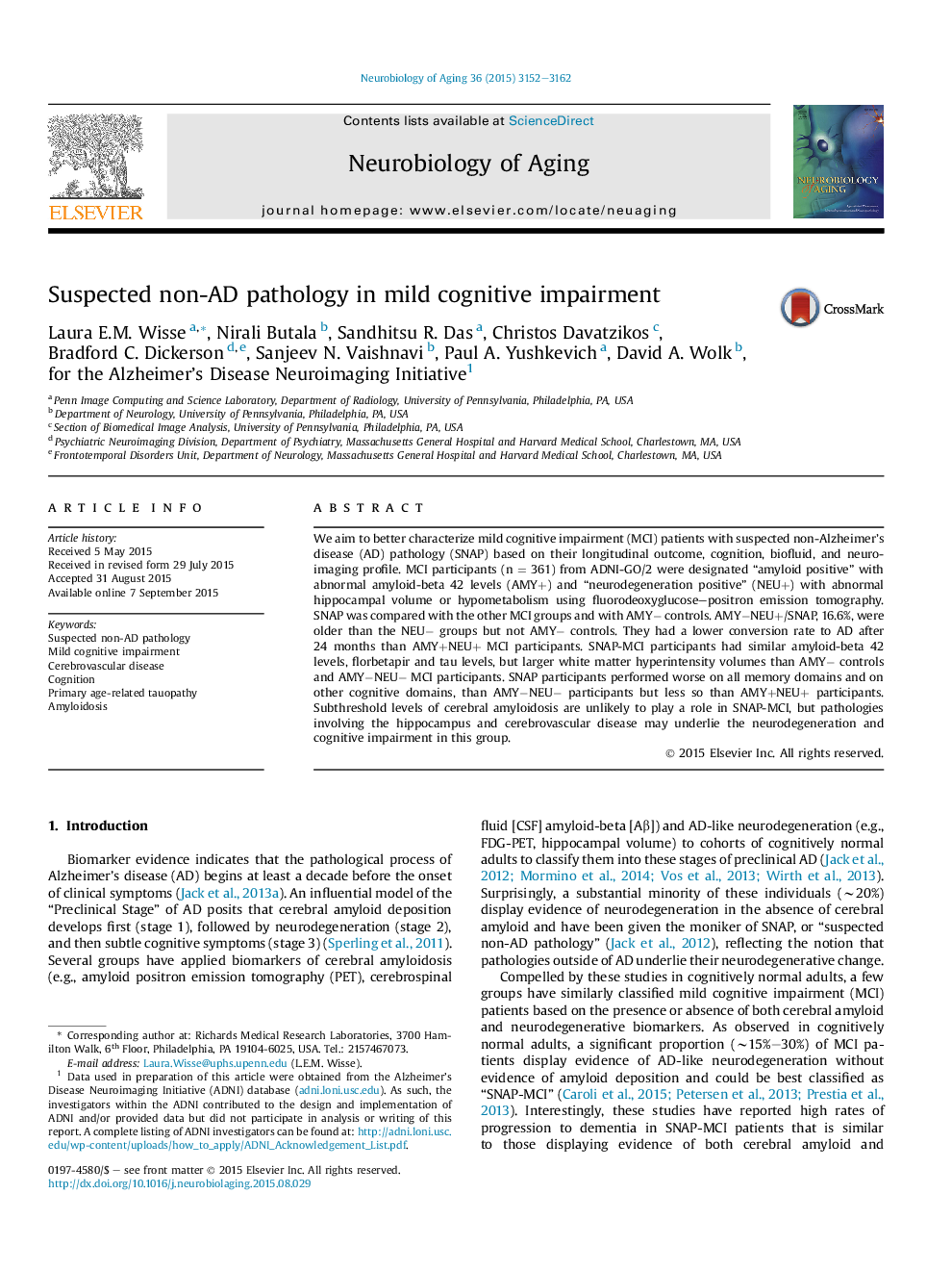| Article ID | Journal | Published Year | Pages | File Type |
|---|---|---|---|---|
| 6803747 | Neurobiology of Aging | 2015 | 11 Pages |
Abstract
We aim to better characterize mild cognitive impairment (MCI) patients with suspected non-Alzheimer's disease (AD) pathology (SNAP) based on their longitudinal outcome, cognition, biofluid, and neuroimaging profile. MCI participants (n = 361) from ADNI-GO/2 were designated “amyloid positive” with abnormal amyloid-beta 42 levels (AMY+) and “neurodegeneration positive” (NEU+) with abnormal hippocampal volume or hypometabolism using fluorodeoxyglucose-positron emission tomography. SNAP was compared with the other MCI groups and with AMYâ controls. AMYâNEU+/SNAP, 16.6%, were older than the NEUâ groups but not AMYâ controls. They had a lower conversion rate to AD after 24 months than AMY+NEU+ MCI participants. SNAP-MCI participants had similar amyloid-beta 42 levels, florbetapir and tau levels, but larger white matter hyperintensity volumes than AMYâ controls and AMYâNEUâ MCI participants. SNAP participants performed worse on all memory domains and on other cognitive domains, than AMYâNEUâ participants but less so than AMY+NEU+ participants. Subthreshold levels of cerebral amyloidosis are unlikely to play a role in SNAP-MCI, but pathologies involving the hippocampus and cerebrovascular disease may underlie the neurodegeneration and cognitive impairment in this group.
Keywords
Related Topics
Life Sciences
Biochemistry, Genetics and Molecular Biology
Ageing
Authors
Laura E.M. Wisse, Nirali Butala, Sandhitsu R. Das, Christos Davatzikos, Bradford C. Dickerson, Sanjeev N. Vaishnavi, Paul A. Yushkevich, David A. Wolk, Alzheimer's Disease Neuroimaging Initiative Alzheimer's Disease Neuroimaging Initiative,
